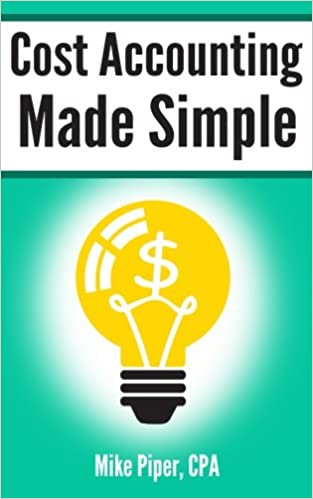
Cost Accounting Made Simple
von Mike Piper
Cost accounting is generally considered to be a part of managerial accounting, in which the primary goal is to provide the business’s managers with the information they need to run the business effectively and profitably.
necessary and summary information when necessary. A control account reflects the sum of all of the balances of each of its subsidiary accounts.
(That is, the Accounts Payable control account would reflect all of the business’s accounts payable.)
A fixed cost is one that does not vary as a function of production levels. Some common fixed costs would be: rent, insurance, property taxes, and pay for employees who are paid a flat salary. A variable cost is one that does vary as a function of production levels. Common variable costs include materials used in production, hourly wages of employees who work in production, and costs of shipping finished goods to customers.
The “relevant range” is the range of production across which our assumptions about fixed and variable costs hold true.
Product costs are all the costs a business incurs to make or purchase the product(s) that it sells. Period costs are essentially all costs that aren’t product costs. Whereas product costs are initially recorded as an asset (inventory) and later recorded as an expense (cost of goods sold) when the inventory is sold, period costs are recorded as an expense in the period in which they are incurred.
For example, wages would be a product cost if they are for the employees who work in a plant producing goods, but they would be period costs if they are for employees who perform selling or administrative functions.
Screws, nuts, and bolts would often be included in indirect materials as well, because while it would be possible to directly trace them to specific products, it would not be cost-effective to do so. (That is, because screws, nuts, and bolts are so inexpensive, it doesn’t often make sense to spend much time/money tracking them.)
Essentially, the idea is to start with the sales budget and to work backward from there to see what will be necessary in order to have sufficient product on hand to satisfy the projected level of sales.